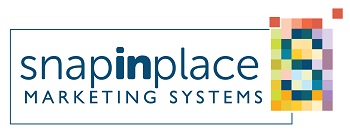The nice thing about standards is, there are so many to choose from. I realize that I’m generalizing here, but as is often the case when I generalize, I don’t care.
— Dave Barry
 Recently I launched a Software-as-a-Service (SaaS) solution called Engage B2B (formerly known as VTrenz from Silverpop) for a company I work for. This SaaS competes in the same space as Eloqua, Marketo and Market2Leads.
Recently I launched a Software-as-a-Service (SaaS) solution called Engage B2B (formerly known as VTrenz from Silverpop) for a company I work for. This SaaS competes in the same space as Eloqua, Marketo and Market2Leads.
They’re all “marketing automation” solutions or what I call “streamlined email broadcasting and response capturing tools”. It wasn’t as smooth an experience to launch as I was originally led to believe by the vendor. It never is.
Engage B2B has an overall uncluttered and almost intuitive front-end that makes the users’ experience smoother, particularly if they’re accustomed to more elaborate tools like Eloqua.
Unlike Market2Lead, however, it doesn’t provide direct access to the back-end to feed a more powerful analytics platform nor does it have as much drag-and-drop functionality as Marketo, which feels “cooler” to use than other tools in this space. But because it’s backed by Silverpop, you know that you can count on a reliable email blasting experience.
Still all this front-end stuff becomes secondary the moment we start to deal with user experience from an entirely different and more significant perspective.
When SaaS Users Stop Caring About The User-Friendly Front-End
After a company decides to “buy” a SaaS solution for Marketing, based on the tool’s look and feel and the claims of reliability from the sales rep and vendor references, it must own up to everything else that sits behind that colorful front-end.
If the SaaS solution does not fit the needs of the business at that time, then a 1 or 2 year subscription agreement with that vendor will seem like an eternity, especially during hard economic times like the ones we’re all living through right now.
SaaS is meant to make life easier for us, right? What could possibly cause a mismatch between a SaaS provider’s solution and the needs of a business interested in streamlining its marketing operations?
I’ve said it before and it merits repeating: The most common mismatch between a SaaS solution and a client’s operational needs lies in how the SaaS forces the client to do things in a decisively different way than the client ever expected it would have to do.
In short, the SaaS dresses up the client in a one-size-fits-all type of business process which the client later wants altered for a more comfortable tailor-made fit that the SaaS won’t be able to provide, because it is not designed to deliver custom-fit solutions.
Rules Matter, Especially When I’m The One Making Them
The issue becomes very apparent once the client begins an attempt to configure the SaaS using rules that, like trade secrets, give the client an advantage over the competition. These rules are unique to the business. They’re internal standards and not shared as “best practices” with anyone, which is why the operation model that they define is not commoditized and open for use by anyone else subscribing to the SaaS provider.
But without these custom rules it can become very difficult for the business user to gain a comparative advantage. In fact, the user is forced to act just like any other worker using a similar SaaS solution. Where’s the advantage in that? Standardization achieves optimal operability but at a price — the loss of inventiveness, unless freed resources are reused toward innovative ends that keep the operation agile.
Think, for instance, of an end-of-quarter rule voiced by the VP of Sales, who requires the Marketing organization to suppress communications to every customer contact who works for an account currently identified as being in the “sensitive” list. This is something that the Saas provider can do. No more emails go out from Marketing to any “sensitive” contacts.
But these contacts do visit the corporate web site on their own and submit inquiries to the business through web forms hosted there by the SaaS provider. When the contact information enters the system this way, the SaaS provider cannot identify them as belonging to the “sensitive accounts” list, because they’re arriving uninvited.
Its system is not designed to process the data this way, given that the handling of “sensitive accounts” is a rule that is not a common standard in use by all its software subscribers. So configuration of this rule is not part of its process design.
The SaaS provider, therefore, naturally routes the contacts to the Field as if they were respondents to any outbound marketing campaign and not “sensitive account” contacts. Now telemarketers are receiving exactly the kind of leads from the SaaS provider that the VP of Sales ruled out and, to make matters worse, the telemarketers are inadvertently making teleprospecting calls to places where their questioning might just blow a deal. Chaos ensues because the custom rule could not be enforced throughout the entire process that the SaaS is responsible for.
Standardize Marketing Campaigns With Care
Put another way, if there is a standard way to flip a burger, does it matter whether you do it for McDonald’s, Burger King or Wendy’s? No, it doesn’t. But marketers are not burger flippers. Barring some fundamental steps which they all share, it matters to marketers how differently they can execute some marketing campaigns depending on who is employing them for the task. They like to be agile and innovative.
A one-size-fits-all approach to campaigning, especially when using SaaS, can in fact reduce a marketing team’s effectiveness in exchange for more operational efficiency. It’s a delicate balance.
The trade-off in gaining greater efficiency has an impact on SaaS tool rollout in the form of user resistance to having to adopt an inflexible way of doing their work, and it is well worth pondering about before attempting to commoditize your marketing campaign process by procuring a marketing automation SaaS solution.
Return to Marketing Automation from Standardizing Marketing With SaaS
